The following is a response to the Volume 10, Issue 1 Symposium. Click here for the symposium prompt and links to other responses.
Halakhic Man was not intended as an exhaustive account of Judaism. The “halakhic man” is an ideal type, as the Rav explains at the beginning. The Rav wrote the essay, as he says, because there are features of halakhic man that were not recognized by philosophers of religion at the time. The Rav also believed that these features are essential for an understanding of Judaism and how Judaism understands the world.
The essay contrasts halakhic man with cognitive man, an ideal type who approaches the world from a purely scientific perspective and with homo religiosus, who yearns for contact with that which transcends this world. Popular notions of religion identify it with otherworldliness; consequently, they cannot make sense of Judaism which is focused on “bringing G-d into this world” rather than elevating man to the other world. Much of the Rav’s work in Halakhic Man is to explain the central place of halakhic study and practice in opposition to the stance of homo religiosus.
To repeat, this does not mean that the halakhic man is the complete Jewish personality, only that his image is central to Judaism and to what is distinctive in Judaism. At the outset of the essay, the Rav states explicitly that halakhic man, by definition, contains within him homo religiosus as well, by which I think he means that halakhic life requires not only external behavior but inward experience—think of prayer, love of God, fear of God, repentance, joy etc.
The story about the Chabad ba’al tokeia is meant to illustrate the strong connection between halakhic emotion and halakhic categories. The reason he wept, as the Rav recounts the story, is that he associated blowing the shofar with certain otherworldly yearnings in Likkutei Torah. R. Moshe Soloveichik, according to this account, was impatient with these non-halakhic and therefore relatively subjective themes. The Rav himself made it clear in later years that he would not have admonished the Hasid. Moreover, the Rav’s brother, who was there, reported that R. Moshe did so because the weeping interfered with the blowing (tre kallei lo mishtam’ei).[1]
The Rav frequently quoted his father’s dictum “the more sacred the emotion the more intimate.” Some have taken this to confirm the stereotype of the cold Litvak focused on punctilious observance of mitzvot. They miss the point that one cannot keep strong emotion private unless one has strong emotion. Modern people often confuse having an emotion with putting it on display.[2] In this we are inspired by pop psychologists and by the kind of show business personalities or politicians who engage in effusive displays of affection to members of their families, acquaintances, and household pets in an effort to demonstrate their humanity.
Our religious life, unfortunately, is often unconsciously influenced by prevalent attitudes. The less we develop a critical perspective on secular culture, the more we are at the mercy of these attitudes. That is one reason for studying the liberal arts, to analyze, assess and resist these tendencies. The distortion of the value and place of emotion in religious life is much affected by rationalistic behavioristic trends, on the one hand, and by the cheapening of emotion in modern therapeutic culture, on the other hand. Just because contemporary Western culture oscillates between these two distortions, setting up false dichotomies between emotion and intellect to the detriment of both, adopting other-directed behavior as a substitute for the personal encounter with G-d, does not mean that we have to follow suit. Philosophy enables us to reflect more clearly on the nature and shadings of emotion and on the cognitive and constitutive role they play in our lives. Literature and music enable us to assess other people’s emotional experience and to express our own. History shows us how people in other times and places have lived their emotional lives. We have choice.
With respect to our spiritual lives and our emotional experience we should be gavras, so to speak and not heftsas. The study of Torah educates us to understand what emotions are appropriate in different connections, how to be joyful and how to grieve. There are moments of public exuberance in family life, along with moments of intimacy, so too there are times and places where the public manifestation of religious emotion is mandated—Hallel is a public recitation; the prayer on fast days is a very different kind of public performance (see on this Ramban end of Parashat Bo). As Rabbi Yosef Blau has often remarked, the joy of Purim is very different from the joy of Yom Kippur and he who meshes the two understands neither.
Rabbi Shalom Carmy is a professor of Jewish Studies at Yeshiva College and serves as the Editor-in-Chief of Tradition.
[1] See further my comments in Lomdut, ed. Yosef Blau (Orthodox Forum) pp. 66ff. The Rav’s most sustained philosophical essay on emotion is in Out of the Whirlwind. For a lengthy discussion of the place of emotion in the Rav’s thought, see Alex Sztuden, “Grief and Joy in the Writings of Rabbi Soloveitchik” (Tradition 43:4; 44:3, and 45:2). On the use of family anecdotes in Halakhic Man, see Sztuden, “Why are There Stories in Halakhic Man?” in Rav Shalom Banayikh, ed. Hayyim Angel and Yitzchak Blau.
[2] See my further discussion in “The Litvak’s Buried Treasure: Further Thoughts on the Dictum “the Holier the Feeling, the More Intimate” (Tradition 44:1).

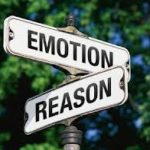

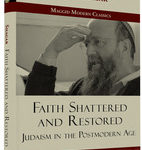
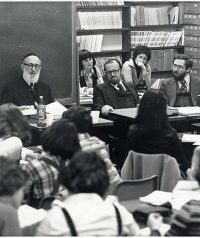
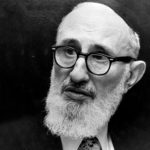
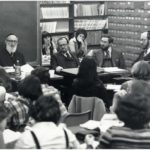
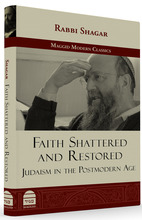
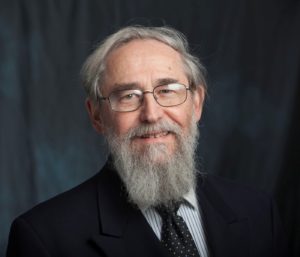


Blowing and Bawling
The following is a response to the Volume 10, Issue 1 Symposium. Click here for the symposium prompt and links to other responses.
Halakhic Man was not intended as an exhaustive account of Judaism. The “halakhic man” is an ideal type, as the Rav explains at the beginning. The Rav wrote the essay, as he says, because there are features of halakhic man that were not recognized by philosophers of religion at the time. The Rav also believed that these features are essential for an understanding of Judaism and how Judaism understands the world.
The essay contrasts halakhic man with cognitive man, an ideal type who approaches the world from a purely scientific perspective and with homo religiosus, who yearns for contact with that which transcends this world. Popular notions of religion identify it with otherworldliness; consequently, they cannot make sense of Judaism which is focused on “bringing G-d into this world” rather than elevating man to the other world. Much of the Rav’s work in Halakhic Man is to explain the central place of halakhic study and practice in opposition to the stance of homo religiosus.
To repeat, this does not mean that the halakhic man is the complete Jewish personality, only that his image is central to Judaism and to what is distinctive in Judaism. At the outset of the essay, the Rav states explicitly that halakhic man, by definition, contains within him homo religiosus as well, by which I think he means that halakhic life requires not only external behavior but inward experience—think of prayer, love of God, fear of God, repentance, joy etc.
The story about the Chabad ba’al tokeia is meant to illustrate the strong connection between halakhic emotion and halakhic categories. The reason he wept, as the Rav recounts the story, is that he associated blowing the shofar with certain otherworldly yearnings in Likkutei Torah. R. Moshe Soloveichik, according to this account, was impatient with these non-halakhic and therefore relatively subjective themes. The Rav himself made it clear in later years that he would not have admonished the Hasid. Moreover, the Rav’s brother, who was there, reported that R. Moshe did so because the weeping interfered with the blowing (tre kallei lo mishtam’ei).[1]
The Rav frequently quoted his father’s dictum “the more sacred the emotion the more intimate.” Some have taken this to confirm the stereotype of the cold Litvak focused on punctilious observance of mitzvot. They miss the point that one cannot keep strong emotion private unless one has strong emotion. Modern people often confuse having an emotion with putting it on display.[2] In this we are inspired by pop psychologists and by the kind of show business personalities or politicians who engage in effusive displays of affection to members of their families, acquaintances, and household pets in an effort to demonstrate their humanity.
Our religious life, unfortunately, is often unconsciously influenced by prevalent attitudes. The less we develop a critical perspective on secular culture, the more we are at the mercy of these attitudes. That is one reason for studying the liberal arts, to analyze, assess and resist these tendencies. The distortion of the value and place of emotion in religious life is much affected by rationalistic behavioristic trends, on the one hand, and by the cheapening of emotion in modern therapeutic culture, on the other hand. Just because contemporary Western culture oscillates between these two distortions, setting up false dichotomies between emotion and intellect to the detriment of both, adopting other-directed behavior as a substitute for the personal encounter with G-d, does not mean that we have to follow suit. Philosophy enables us to reflect more clearly on the nature and shadings of emotion and on the cognitive and constitutive role they play in our lives. Literature and music enable us to assess other people’s emotional experience and to express our own. History shows us how people in other times and places have lived their emotional lives. We have choice.
With respect to our spiritual lives and our emotional experience we should be gavras, so to speak and not heftsas. The study of Torah educates us to understand what emotions are appropriate in different connections, how to be joyful and how to grieve. There are moments of public exuberance in family life, along with moments of intimacy, so too there are times and places where the public manifestation of religious emotion is mandated—Hallel is a public recitation; the prayer on fast days is a very different kind of public performance (see on this Ramban end of Parashat Bo). As Rabbi Yosef Blau has often remarked, the joy of Purim is very different from the joy of Yom Kippur and he who meshes the two understands neither.
Rabbi Shalom Carmy is a professor of Jewish Studies at Yeshiva College and serves as the Editor-in-Chief of Tradition.
[1] See further my comments in Lomdut, ed. Yosef Blau (Orthodox Forum) pp. 66ff. The Rav’s most sustained philosophical essay on emotion is in Out of the Whirlwind. For a lengthy discussion of the place of emotion in the Rav’s thought, see Alex Sztuden, “Grief and Joy in the Writings of Rabbi Soloveitchik” (Tradition 43:4; 44:3, and 45:2). On the use of family anecdotes in Halakhic Man, see Sztuden, “Why are There Stories in Halakhic Man?” in Rav Shalom Banayikh, ed. Hayyim Angel and Yitzchak Blau.
[2] See my further discussion in “The Litvak’s Buried Treasure: Further Thoughts on the Dictum “the Holier the Feeling, the More Intimate” (Tradition 44:1).